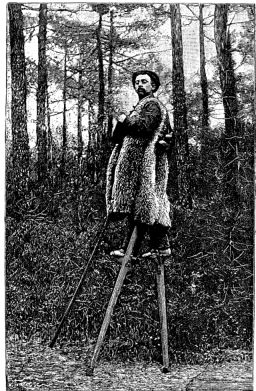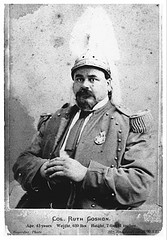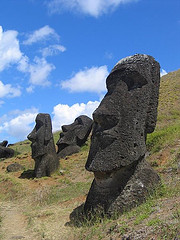
In 1891, Sylvain Dornon walked from Paris to Moscow on stilts. It took him only 58 days.
Stilts were big in Gascony, whose wide plains, few roads, and broad marshes made foot travel difficult, and where shepherds needed to tend widely scattered flocks. The 5-foot stilts of Landes were called tchangues (“big legs”); with a long staff or crook, they turned a shepherd into a giant walking tripod that could cover plains, bush, pools and marshes with equal ease.
Spend enough time up there and you’d get pretty good at it. An experienced stilt-walker could stand, walk, run, hop, even pick flowers. When he wasn’t tending his flock he could knit or spin using a distaff stuck in his girdle; some tchangues even carried guns or portable stoves.
In 1808, when Josephine went to Bayonne to rejoin Napoleon I, the municipality sent an escort of stilt-walkers to meet her. It’s said that they easily kept up with the horses on the return journey, and the tchangues amused the ladies by racing, a tradition that continued through the 19th century. On the market days in Bordeaux, peasants would travel up to 20 leagues laden with bags and baskets. Beats a Segway.



